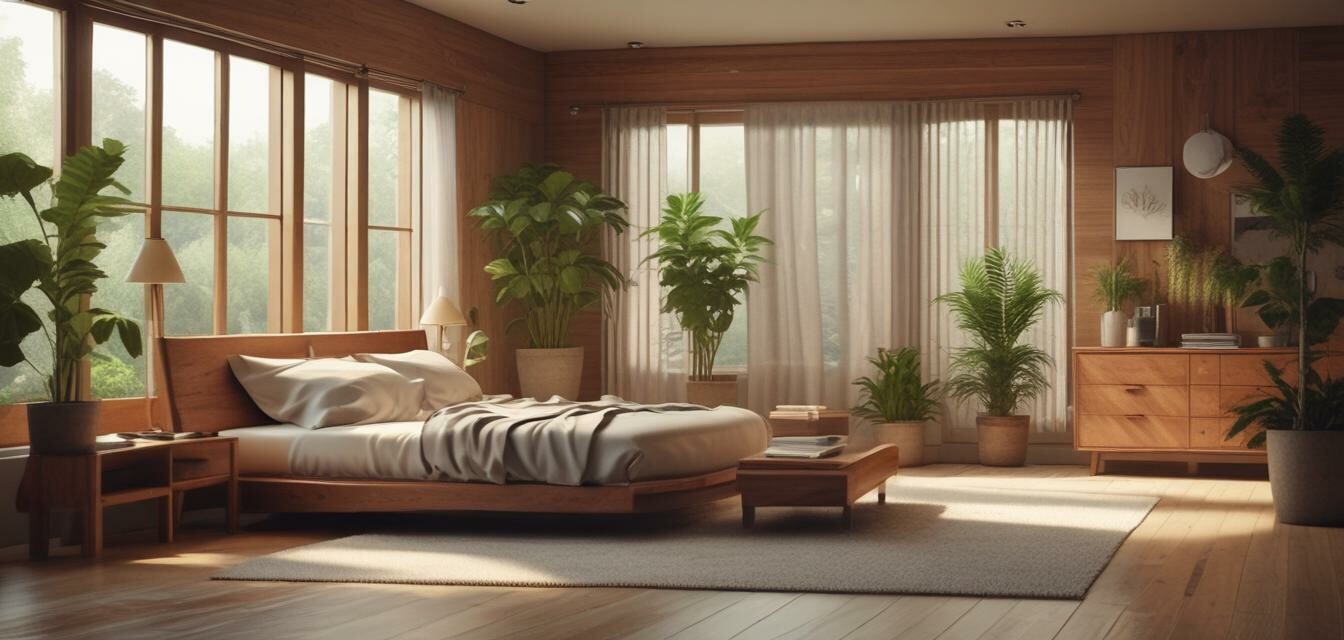
The Connection Between Wellness and Wooden Interiors
Key Takeaways
- Natural wood enhances aesthetic appeal and promotes a calm atmosphere.
- Incorporating wooden elements can improve indoor air quality.
- Wood has a positive effect on mental well-being and comfort levels.
- Sustainable wood practices contribute to environmental wellness.
In recent years, the relationship between our living spaces and our overall well-being has garnered significant attention. Amidst modernity and urban living, the trend of integrating wooden elements into home interiors is more than just décor—it's a pathway toward a healthier living environment.
The Role of Natural Wood in Interior Design
Natural wood possesses unique qualities that can transform any space, making it feel more inviting and serene. Here, we explore the reasons wooden interiors are beneficial for wellness.
1. Aesthetic Appeal and Psychological Benefits
Wooden elements provide a warm and inviting atmosphere compared to synthetic materials. This aesthetic appeal not only promotes a feeling of comfort but also has psychological benefits:
- Natural patterns and textures can evoke feelings of serenity.
- Warm tones of wood can reduce stress and anxiety.
- Spaces designed with wood often reflect a connection to nature, which is soothing to the mind.
2. Improved Indoor Air Quality
Wood can positively influence air quality, making your living space healthier:
- Wood naturally absorbs moisture, helping to regulate humidity levels in the home.
- Common trees, like cedar and pine, have properties that can reduce airborne pollutants.
- Using sustainable wood sourced from responsible forestry contributes to better air quality both indoors and outdoors.
3. Enhancing Comfort and Relaxation
The sensory appeal of wood can enhance overall comfort:
- The warmth of wood can make interiors feel more cozy and welcoming.
- Wood gives a tactile experience that can evoke feelings of nostalgia and comfort.
- Designing spaces with wooden elements can encourage relaxation and promote unwinding after a long day.
Integrating Wood into Your Home
Now that we know the benefits of wooden interiors, let's explore how to incorporate wood into various aspects of your home effectively:
1. Furniture Choices
Opting for wooden furniture not only enhances aesthetics but serves functional purposes. Consider:
| Furniture Type | Wood Recommendation | Benefits |
|---|---|---|
| Tables | Oak, Walnut | Durable with timeless beauty. |
| Chairs | Teak, Birch | Comfortable, sturdy, and stylish. |
| Shelving | Pine, Ash | Lightweight yet strong; ideal for decor. |
2. Decorative Touches
Incorporating wooden accents can enhance the overall theme of the home. Consider integrating:
- Wooden wall art and sculptures
- Wooden picture frames that complement your décor
- Natural wood planters for indoor plants
3. Flooring Options
Choosing wooden flooring can elevate both the visual appeal and comfort:
- Engineered hardwood offers durability and aesthetic appeal.
- Solid hardwood flooring creates a classic look that lasts for years.
- Reclaimed wood adds uniqueness and character to any room.
Embracing Sustainability in Wood Choices
As we strive for wellness through the integration of wood, it’s essential to choose sustainably sourced materials. Practices such as:
- Supporting eco-friendly harvesting techniques
- Opting for products from certified sustainable sources
- Considering reclaimed or recycled wood options
These considerations not only protect the environment but ensure that the benefits of wood extend beyond aesthetics and comfort, contributing to a healthier planet.
Tips for Beginners on Choosing Wooden Products
- Research the type of wood that best suits your needs and preferences.
- Choose products that promote eco-friendliness and sustainability.
- Take your time to shop around; quality wooden pieces often require a greater investment but are worth it.
- Consider the maintenance requirements of different wood types to ensure longevity.
Conclusion
The connection between wellness and wooden interiors is undeniable. From the physical and psychological benefits to promoting sustainable practices, wooden elements are revolutionary in creating a healthy living environment. By consciously incorporating wood into our homes, we can enjoy its numerous advantages while also embracing a lifestyle that prioritizes wellness, comfort, and sustainability.
Pros
- Improves the overall aesthetic of any space.
- Enhances psychological well-being.
- Promotes better indoor air quality.
- Contributes to eco-friendly living practices.
Cons
- Higher upfront costs compared to synthetic materials.
- Requires regular maintenance to preserve quality.
- Sensitive to humidity and temperature fluctuations.
For more insights on how to enhance your living space, check out our sections on news and trends, or explore our home décor accents for options that align with your wellness journey.